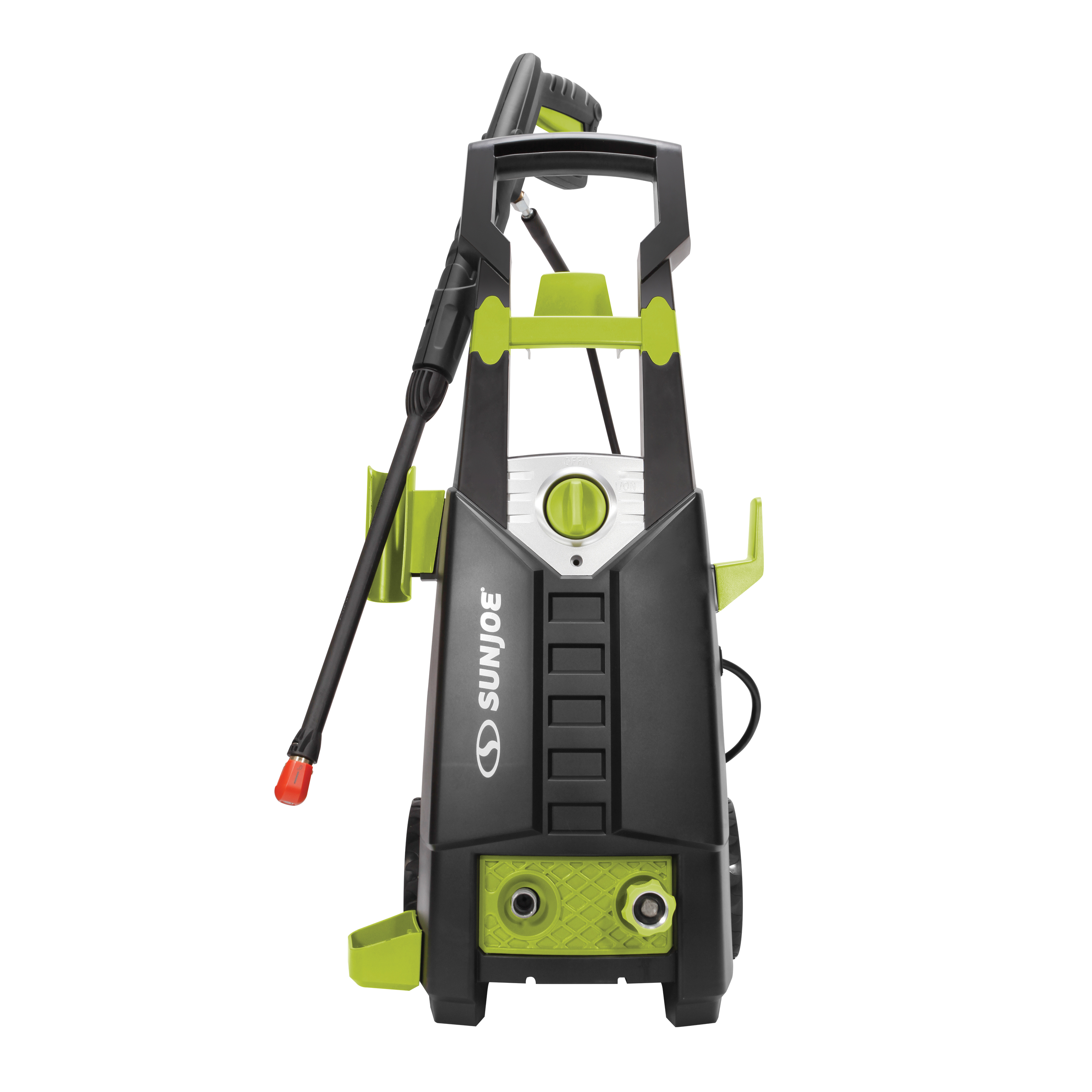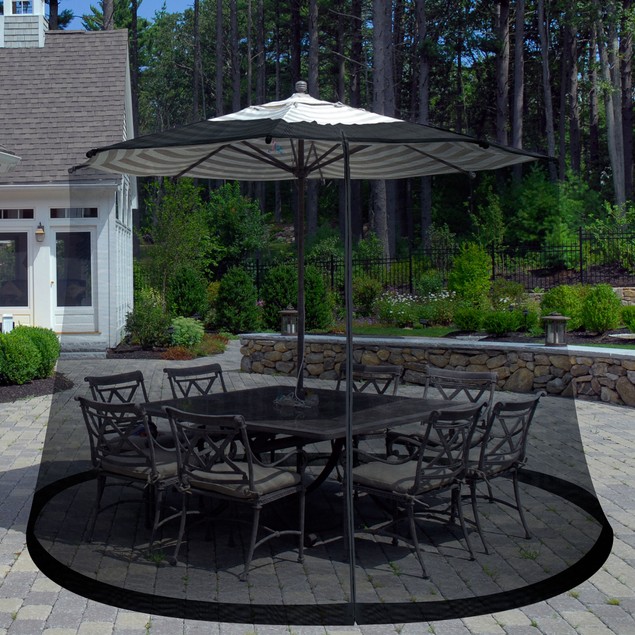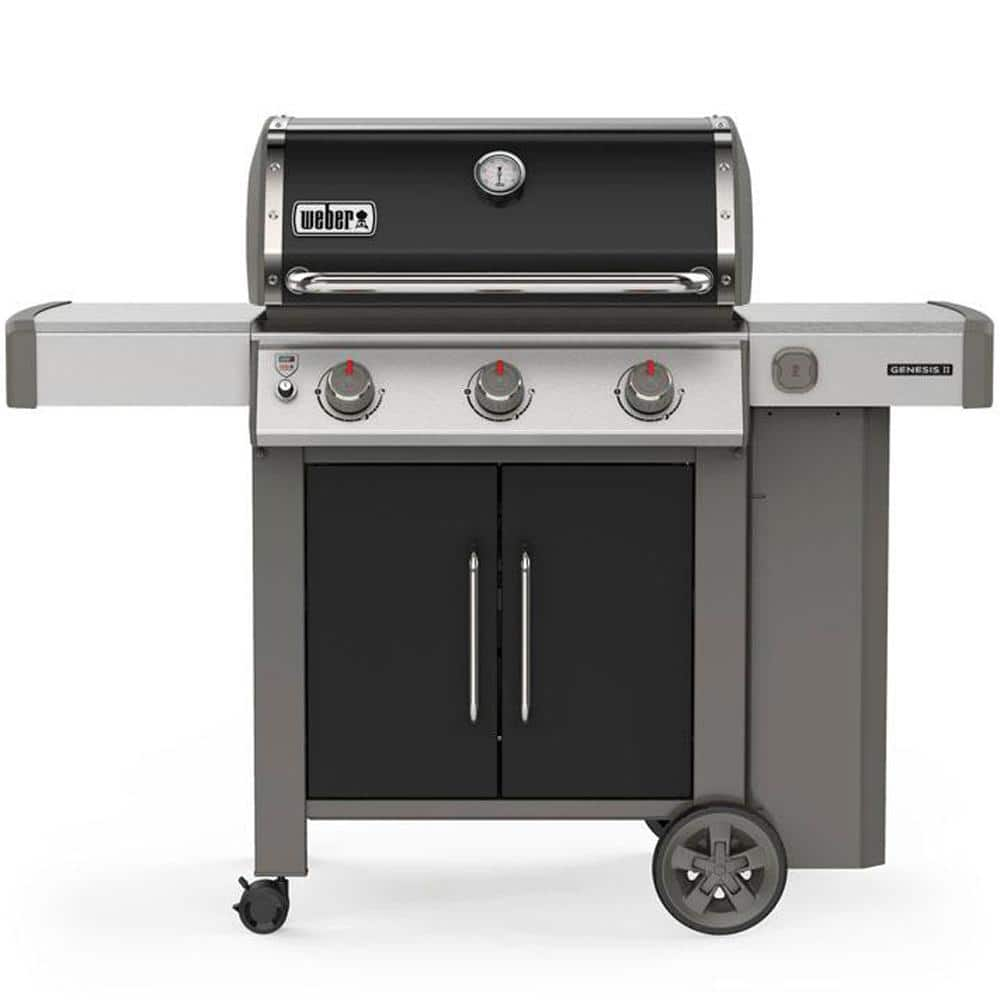Sun Joe SPX2598-MAX 2000 PSI Electric Pressure Washer with Foam Cannon
Powerful 13-amp motor generates up to 2,000 PSI/1.6 GPM for maximum cleaning power to strip away stubborn dirt, grease and grime. Onboard 1 liter foam canon is the perfect accessory for cleaning stubborn stains. TSS (Total Stop System) — automatically shuts off the pump and power when the trigger is not engaged to save energy and prolong pump life.
GRIME FIGHTER. Tackle your toughest home, outdoor and auto-cleaning tasks with next-generation grime fighting technology: SPX2598-MAX 13-Amp Electric Pressure Washer from SUN JOE®. When grime gets the upper hand, fight back against your toughest home, outdoor and auto cleaning tasks with SPX2598-MAX. Combining the power of gas with the performance of an electric, MAX is made for those who expect the most out of their machines. It’s packed with the most-requested features for your most challenging chores — like a rugged 20-foot high-pressure hose, on-board 1 liter foam cannon, a 35-foot power cord with built-in GFCI, and exclusive Total Stop System technology to save both pump and power when the trigger is not engaged. SPX2598-MAX’s eco-friendly 13-amp electric motor packs a powerful punch – up to 2000 pounds per square inch – to break down dirt and grime, and pumps up to 1.6 GPM max flow rate to rinse away tough oil stains, mildew, caked on mud, rust and other stubborn dirt and deposits. And with 3 on-board Quick Connect nozzles, you can quickly customize the spray to suit the chore. Choose from 0º, 15º and 40º; swap nozzles in seconds and switch from punishing pinpoint jet to powerful fan spray. From start to finish, you can count on SPX2598-MAX for the continuous, reliable power + performance that you’ve come to expect from America’s leading eco-friendly brand of pressure washers. So, when there’s dirty work to be done, take it to the MAX with SUN JOE!
- Powerful 13-amp motor generates up to 2,000 PSI/1.6 GPM for maximum cleaning power to strip away stubborn dirt, grease and grime.
- Onboard 1 liter foam canon is the perfect accessory for cleaning stubborn stains
- TSS (Total Stop System) — automatically shuts off the pump and power when the trigger is not engaged to save energy and prolong pump life
- Includes 34-inch extension wand, 20-foot high pressure hose, 35-foot power code with GFCI protection, garden hose adapter, needle clean-out tool
- 3 Quick Connect nozzles (0º, 15º, and 40º) tackle different cleaning projects
Additional information
| Max Pressure (PSI) | 2000 |
|---|---|
| Max Flow Rate (gpm) | 1.6 |
| Amperage (amps) | 13 |
| Detergent Tank (fl oz) | 33.8 |
| Nozzle | Quick Tips |
| Weight (lbs) | 17 |
2000 (MM) was a century leap year starting on Saturday of the Gregorian calendar, the 2000th year of the Common Era (CE) and Anno Domini (AD) designations, the 1000th and last year of the 2nd millennium, the 100th and last year of the 20th century, and the 1st year of the 2000s decade.
2000 was designated as the International Year for the Culture of Peace and the World Mathematical Year.
Popular culture holds the year 2000 as the first year of the 21st century and the 3rd millennium, because of a tendency to group the years according to decimal values, as if non-existent year zero were counted. According to the Gregorian calendar, these distinctions fall to the year 2001, because the 1st century was retroactively said to start with the year AD 1. Since the Gregorian calendar does not have year zero, its first millennium spanned from years 1 to 1000 inclusively and its second millennium from years 1001 to 2000. (For further information, see century and millennium.)
The year 2000 is sometimes abbreviated as "Y2K" (the "Y" stands for "year", and the "K" stands for "kilo" which means "thousand"). The year 2000 was the subject of Y2K concerns, which were fears that computers would not shift from 1999 to 2000 correctly. However, by the end of 1999, many companies had already converted to new, or upgraded, existing software. Some even obtained "Y2K certification". As a result of massive effort, relatively few problems occurred.
A cannon is a large-caliber gun classified as a type of artillery, which usually launches a projectile using explosive chemical propellant. Gunpowder ("black powder") was the primary propellant before the invention of smokeless powder during the late 19th century. Cannons vary in gauge, effective range, mobility, rate of fire, angle of fire and firepower; different forms of cannon combine and balance these attributes in varying degrees, depending on their intended use on the battlefield. A cannon is a type of heavy artillery weapon.
The word cannon is derived from several languages, in which the original definition can usually be translated as tube, cane, or reed. In the modern era, the term cannon has fallen into decline, replaced by guns or artillery, if not a more specific term such as howitzer or mortar, except for high-caliber automatic weapons firing bigger rounds than machine guns, called autocannons.
The earliest known depiction of cannons appeared in Song dynasty China as early as the 12th century; however, solid archaeological and documentary evidence of cannons do not appear until the 13th century. In 1288, Yuan dynasty troops are recorded to have used hand cannon in combat, and the earliest extant cannon bearing a date of production comes from the same period. By the early 14th century, possible mentions of cannon had appeared in the Middle East and the depiction of one in Europe by 1326. Recorded usage of cannon began appearing almost immediately after. They subsequently spread to India, their usage on the subcontinent being first attested to in 1366. By the end of the 14th century, cannons were widespread throughout Eurasia.
Cannons were used primarily as anti-infantry weapons until around 1374, when large cannons were recorded to have breached walls for the first time in Europe. Cannons featured prominently as siege weapons, and ever larger pieces appeared. In 1464 a 16,000 kg (35,000 lb) cannon known as the Great Turkish Bombard was created in the Ottoman Empire. Cannons as field artillery became more important after 1453, with the introduction of limber, which greatly improved cannon maneuverability and mobility. European cannons reached their longer, lighter, more accurate, and more efficient "classic form" around 1480. This classic European cannon design stayed relatively consistent in form with minor changes until the 1750s.
Foams are materials formed by trapping pockets of gas in a liquid or solid.
A bath sponge and the head on a glass of beer are examples of foams. In most foams, the volume of gas is large, with thin films of liquid or solid separating the regions of gas. Soap foams are also known as suds.
Solid foams can be closed-cell or open-cell. In closed-cell foam, the gas forms discrete pockets, each completely surrounded by the solid material. In open-cell foam, gas pockets connect to each other. A bath sponge is an example of an open-cell foam: water easily flows through the entire structure, displacing the air. A sleeping mat is an example of a closed-cell foam: gas pockets are sealed from each other so the mat cannot soak up water.
Foams are examples of dispersed media. In general, gas is present, so it divides into gas bubbles of different sizes (i.e., the material is polydisperse)—separated by liquid regions that may form films, thinner and thinner when the liquid phase drains out of the system films. When the principal scale is small, i.e., for a very fine foam, this dispersed medium can be considered a type of colloid.
Foam can also refer to something that is analogous to foam, such as quantum foam.
Pressure (symbol: p or P) is the force applied perpendicular to the surface of an object per unit area over which that force is distributed.: 445 Gauge pressure (also spelled gage pressure) is the pressure relative to the ambient pressure.
Various units are used to express pressure. Some of these derive from a unit of force divided by a unit of area; the SI unit of pressure, the pascal (Pa), for example, is one newton per square metre (N/m2); similarly, the pound-force per square inch (psi, symbol lbf/in2) is the traditional unit of pressure in the imperial and US customary systems. Pressure may also be expressed in terms of standard atmospheric pressure; the unit atmosphere (atm) is equal to this pressure, and the torr is defined as 1⁄760 of this. Manometric units such as the centimetre of water, millimetre of mercury, and inch of mercury are used to express pressures in terms of the height of column of a particular fluid in a manometer.
The Sun is the star at the center of the Solar System. It is a massive, hot ball of plasma, inflated and heated by energy produced by nuclear fusion reactions at its core. Part of this energy is emitted from its surface as visible light, ultraviolet, and infrared radiation, providing most of the energy for life on Earth. The Sun has been an object of veneration in many cultures. It has been a central subject for astronomical research since antiquity.
The Sun orbits the Galactic Center at a distance of 24,000 to 28,000 light-years. From Earth, it is 1 AU (1.496×108 km) or about 8 light-minutes away. Its diameter is about 1,391,400 km (864,600 mi; 4.64 LS), 109 times that of Earth. Its mass is about 330,000 times that of Earth, making up about 99.86% of the total mass of the Solar System. Roughly three-quarters of the Sun's mass consists of hydrogen (~73%); the rest is mostly helium (~25%), with much smaller quantities of heavier elements, including oxygen, carbon, neon, and iron.
The Sun is a G-type main-sequence star (G2V), informally called a yellow dwarf, though its light is actually white. It formed approximately 4.6 billion years ago from the gravitational collapse of matter within a region of a large molecular cloud. Most of this matter gathered in the center, whereas the rest flattened into an orbiting disk that became the Solar System. The central mass became so hot and dense that it eventually initiated nuclear fusion in its core. It is thought that almost all stars form by this process.
Every second, the Sun's core fuses about 600 billion kilograms (kg) of hydrogen into helium and converts 4 billion kg of matter into energy. Far in the future, when hydrogen fusion in the Sun's core diminishes to the point where the Sun is no longer in hydrostatic equilibrium, its core will undergo a marked increase in density and temperature which will cause its outer layers to expand, eventually transforming the Sun into a red giant. This process will make the Sun large enough to render Earth uninhabitable approximately five billion years from the present. Subsequently, the Sun will shed its outer layers and become a dense type of cooling star (a white dwarf), and no longer produce energy by fusion, but it will still glow and give off heat from its previous fusion for trillions of years. After that, it is theorized to become a super dense black dwarf, giving off no more energy.
Washer most commonly refers to:
- Washer (hardware), a thin usually disc-shaped plate with a hole in the middle typically used with a bolt or nut
- Washing machine, for cleaning clothes
Washer may also refer to:
- Dishwasher, a machine for cleaning dishware, cookware and cutlery
- Dishwasher (occupation), a person who cleans dishware, cookware and cutlery
- Washer, a person with obsessive-compulsive disorder who washes her/his hands compulsively
- Washer method, a mathematical formula for finding volume
- Washer pitching, an outdoor game involving tossing discs at a target
With or WITH may refer to:
- With, a preposition in English
- Carl Johannes With (1877–1923), Danish doctor and arachnologist
- With (character), a character in D. N. Angel
- With (novel), a novel by Donald Harrington
- With (album), a 2014 album by TVXQ
- With (EP), a 2021 EP by Nam Woo-hyun






by Mike
We used this to clean our outbuilding before painting it( water only, no cleaners added) and it did an amazing job!! I plan on purchasing more Sun Joe products:)
by Matt
I have been building my arsenal for my car detailing business. One of the first things I needed to look at was a good quality pressure washer. I did see some mixed reviews but decided for start up this would be a good starting point. To test it out I first decided to clean the exterior of my brother-in-laws truck. It had a lot of built up dirt in the wheel wells as well as lots of bug splatter on the front end from driving from several states away. This pressur washer made quick and easy work out of it and made getting in the wheel wells to clean the dirt and mud super easy. The foam cannon was a great addition as it is an essential tool. the assembly was easy and took very little time. The operation was smooth. I highly recommend this pressure washer to anyone looking.
by Helen
This little power washer did great for it’s size and price. It was easy to put together and easy to use. Happy we got it!
by Monica
This is a great product. It is easy to put together and easy to use. I used it to pressure wash my house and my kids’ outside plastic climbers and slides. I love the options to use different nozzles for different pressures. You cant go wrong with this product, especially with Black Friday prices!
by Debra
I purchased this on the black friday sale, and we love it for around the house, this does perfect for us, I’m not sure how it would do on a vehicle with heavy mud, I think you would need a bigger one, but for spraying the house and porch is just perfect.